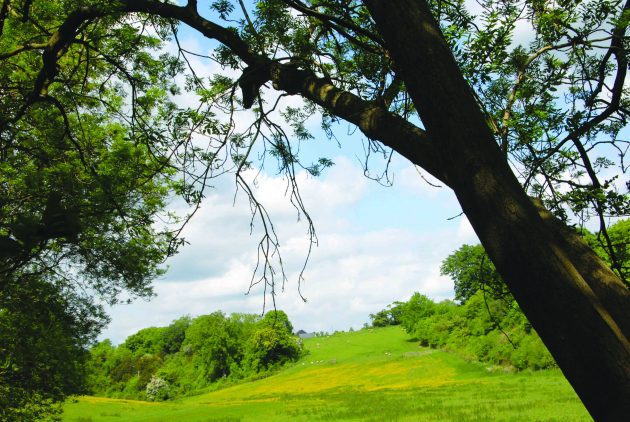In woodland we trust
Is your woodland future-proofed? The Woodland Trust can help to ensure that the arboreal landscape remains abundant for ourselves and our wildlife

Advertorial
Climate change, pests, diseases and pollution are combining to extend a serious risk to the well-being of the UK’s woodlands. This toxic combination will influence our lives and businesses, and has the ability to threaten our wildlife. However, if we act now, we can give nature a helping hand, boosting the health and vitality of the landscapes in which trees and woods play such an important part.
Wide-reaching benefits
The benefits of trees and woods are known to be many and wide-reaching: they provide cover for all types of game; they are a source of firewood and timber; they give an attractive landscape for pleasurable walking or riding; and they provide habitats for our wildlife. Pests and diseases have posed and still pose serious risks to our arboreal heritage:
• A new and more virulent form of Dutch elm disease ravaged the countryside in the 1960s and 1970s, destroying 25million elms. Even today, elms are confined to existence as a hedgerow shrub, succumbing to the disease as they reach a certain age.
• Since it was first identified in the UK in 2011-12, ash dieback has been sweeping across the countryside. This loss of large numbers of ash trees, one of our most common native trees, in hedgerows and shelterbelts will have profound effects on soil erosion, livestock and water management. The beauty of our natural countryside is considerably diminished by the loss of the trees. The Derbyshire Dales, the East Midlands, Northern Ireland and parts of Cumbria — woodland and hedgerows in all of these areas have an abundance of ash trees; loss of these trees to dieback will make radical changes to the landscape.
• Oak trees, an evocative symbol of British history, are also at risk from acute oak decline and oak processionary moth, the latter of which is harmful to humans.
The time to act is now, to ensure that we protect our countryside for future generations. Appropriate woodland management can help to prevent a significant loss to any one particular disease by promoting the natural regeneration of a mix of species; culling deer, where grazing and browsing has reached unsustainable and damaging levels, alleviates the loss of young saplings by grazing; and planting a diverse mix of native species in areas dominated by a single species helps to improve the viability of the whole area. This in turn helps to provide a good environment for gamebirds and other wildlife.
Creating new narrow woodlands with long external edges makes an ideal habitat for pheasants. Birds are encouraged to fly upwards from shrubby clearings inside woods. Buffering woodland and planting boundary hedges can help mitigate against strong winds on the ground, creating warm shelter for birds. The planting of trees in field corners or other areas unsuitable for cultivation creates habitats for game and enhances existing habitats, doubling up as shelterbelts if planted near crops, and attracting vital pollinators.
“We were motivated to plant trees to improve wildlife habitats, but also as new cover for game and firewood,” says Edward Heath, who planted 2,250 trees on a hectare of rough pasture to provide gamecover. “We specifically went for a mix of trees and shrubs as the best way to encourage gamebirds and local wildlife.”
Sympathetic hedgerow management, which allows hedgerows to grow wider and be cut less frequently, provides valuable corridors through the landscape that helps wildlife move easily between habitat patches.
The Woodland Trust can offer planting support and advice, as well as a range of subsidised tree-planting options. Email plant@woodlandtrust.org.uk, tel 0330 333 5303 for more details, or visit Woodland Trust to find out about subsidised planting schemes.








